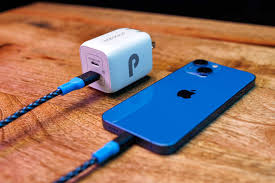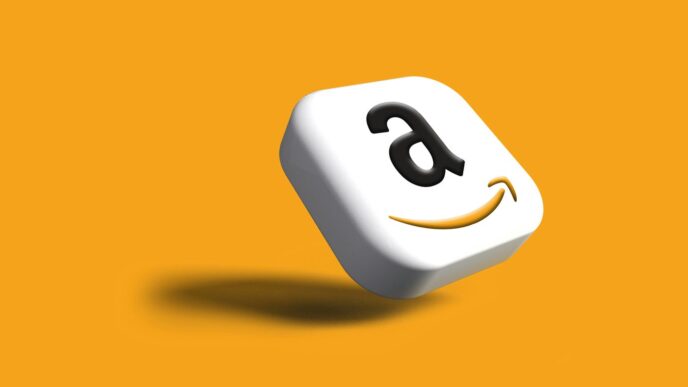Travelling with an iPhone often brings familiar frustrations: battery anxiety during long flights, insufficient power outlets in hotel rooms, and tangled cables cluttering your luggage. These charging challenges can transform what should be seamless connectivity into a constant source of stress. Fortunately, innovative solutions like magnetic power bank iPhone accessories and advanced USB-C charger technology are revolutionising how we maintain device power whilst on the move. Modern charging upgrades offer unprecedented convenience, combining portability with efficiency to ensure your iPhone remains powered throughout any journey.
Upgrade 1: Magnetic Power Banks – Liberation from Cable Chaos
The introduction of MagSafe technology has transformed portable charging, with magnetic power bank iPhone solutions offering unprecedented convenience for travellers. These wireless power banks utilise strong neodymium magnets to attach securely to your iPhone’s back, eliminating the need for cables during charging sessions.
In practical travel scenarios, magnetic power banks excel remarkably. During lengthy flights, you can attach the power bank whilst using your phone for entertainment, maintaining comfortable ergonomics without wrestling with cables in cramped seating. In busy airports or coffee shops, the secure magnetic connection prevents accidental disconnections when moving between locations.
When selecting a magnetic power bank iPhone accessory, consider magnetic strength as the primary factor. Insufficient magnetic force results in frequent disconnections, particularly when the phone is moved or repositioned. Battery capacity typically ranges from 5,000mAh to 10,000mAh, with the former offering better portability whilst the latter provides extended charging sessions. Heat management proves crucial during extended use, as excessive temperature can damage both the power bank and your iPhone’s battery longevity.
Upgrade 2: USB-C Chargers – Speed Meets Efficiency
Modern USB-C charger technology has revolutionised iPhone charging speeds through Power Delivery (PD) protocols. Unlike traditional 5W chargers, USB-C charger units can deliver up to 20W of power to compatible iPhones, reducing charging time from zero to 50% battery in approximately 30 minutes.
Power output selection requires careful consideration of your specific needs. A 20W USB-C charger provides optimal iPhone charging speed without unnecessary bulk, whilst 30W variants offer future-proofing for additional devices. For travellers carrying laptops alongside their iPhone, 65W chargers enable simultaneous device charging through multiple ports.
The travel advantages of USB-C charger technology extend beyond speed. Universal compatibility means a single charger can power your iPhone, laptop, tablet, and other USB-C devices, significantly reducing luggage weight. International compatibility eliminates the need for multiple regional adapters, whilst compact designs occupy minimal space in travel bags.
Upgrade 3: Multi-Port Charging Stations – Comprehensive Power Solutions
Hotel rooms frequently offer limited power outlets, often positioned inconveniently behind furniture or occupied by existing appliances. Multi-port charging stations resolve these challenges by expanding a single outlet into multiple charging points, accommodating all your travel electronics simultaneously.
Optimal charging station configurations combine USB-A ports for legacy devices, USB-C ports for modern electronics, and wireless charging pads for compatible smartphones. Advanced models incorporate intelligent power distribution, automatically adjusting output based on connected device requirements whilst preventing overcharging or overheating.
The balance between portability and functionality requires careful consideration. Compact charging stations sacrifice some port quantity for reduced weight and size, whilst larger units offer comprehensive connectivity at the expense of luggage space. Consider your typical device count and charging patterns when selecting the appropriate configuration.
Upgrade 4: Wireless Car Charging Mounts – Navigation Without Compromise
Road trips and rental car usage present unique charging challenges, particularly when relying on iPhone navigation for extended periods. Wireless car charging mounts address these needs by providing continuous power whilst maintaining optimal viewing angles for GPS navigation.
Installation location significantly impacts functionality and safety. Dashboard mounts offer stable positioning but may obstruct driver visibility, whilst air vent mounts provide adjustable positioning with potential stability concerns on rough roads. Premium mounts incorporate adjustable arms and rotating heads to accommodate different iPhone sizes and orientations.
Heat dissipation proves critical during summer travel or in vehicles with significant sun exposure. Quality wireless charging mounts incorporate active cooling fans or heat-dissipating materials to prevent overheating, which can reduce charging efficiency and potentially damage your iPhone’s battery. Additionally, ensure compatibility with your iPhone case thickness, as wireless charging effectiveness diminishes with thicker protective cases.
Upgrade 5: Portable Cable Collections – Versatility for Every Connection
Despite wireless charging advances, cable connections remain essential for maximum charging speed and device compatibility. A well-curated cable collection ensures connectivity across various scenarios and device types encountered during travel.
Effective cable selections incorporate Lightning cables for iPhone connectivity, USB-C cables for modern devices, and Micro-USB cables for older electronics still commonly encountered in hotels and rental services. Cable length strategy proves equally important: 0.3-meter cables suit portable power banks and compact charging scenarios, 1-meter cables provide comfortable device use whilst charging, and 2-meter cables enable charging from distant outlets.
Material quality significantly impacts durability and travel longevity. Braided cables offer superior flexibility and resistance to tangling compared to standard plastic variants, whilst reinforced connector joints prevent the common failure points that plague cheaper alternatives. Organised storage solutions, such as cable pouches or cord organisers, prevent tangling and facilitate quick access during travel.
Upgrade 6: Smart Universal Adapters – Global Connectivity Solutions
International travel presents diverse power outlet standards, with European Type C sockets, British Type G plugs, and American Type A configurations requiring different adapters. Smart universal adapters consolidate these requirements whilst adding modern charging conveniences.
Contemporary smart adapters integrate multiple USB ports alongside traditional plug compatibility, enabling simultaneous charging of multiple devices without occupying additional outlets. Advanced models display power consumption and provide overload protection, preventing damage to sensitive electronics in regions with unstable power supplies.
Size and weight considerations prove crucial for frequent travellers. Compact adapters sacrifice some port quantity for reduced luggage impact, whilst comprehensive units offer extensive connectivity options at increased bulk. Safety certifications including CE marking for European markets, FCC approval for American use, and UL listing ensure reliable operation across different electrical systems.
Selection Guidelines and Usage Best Practices
Budget allocation requires strategic consideration across different charging upgrade categories. Premium magnetic power banks typically cost £60-£100, whilst quality USB-C charger units range from £25-£50 depending on power output and port quantity. Multi-port charging stations vary from £30-£80 based on port count and intelligent features.
Compatibility verification proves essential before purchase. Ensure your iPhone model supports the intended charging speeds, particularly for older devices that may not benefit from high-wattage USB-C charger technology. MagSafe compatibility requires iPhone 12 or newer models, whilst wireless charging functions with iPhone 8 and later versions.
Safety practices include monitoring device temperatures during charging, particularly with high-power solutions or in warm environments. Authentic products from reputable manufacturers provide better safety margins compared to unbranded alternatives, whilst proper storage prevents damage and extends product lifespan.
Conclusion
These six charging upgrades collectively transform iPhone travel experiences by addressing common power management challenges. Magnetic power bank iPhone solutions eliminate cable inconvenience, whilst advanced USB-C charger technology ensures rapid power restoration when needed. The combination of wireless convenience, multi-device compatibility, and global connectivity creates a comprehensive charging ecosystem that adapts to any travel scenario.
Individual needs vary significantly between business travellers requiring consistent connectivity and leisure tourists with more flexible power requirements. Investment in quality charging solutions provides long-term value through improved travel experiences, reduced stress, and reliable device functionality. As charging technology continues evolving, these foundational upgrades ensure your iPhone remains powered and ready for whatever adventures await.













